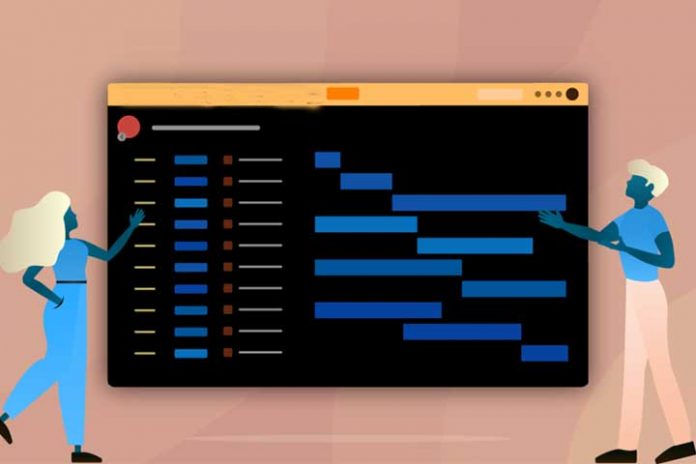Managing projects efficiently is not a bed of roses; it can be highly complex if we do not have the tools, knowledge, and skills necessary to bring projects to fruition. Do you want to know what the Gantt Chart is and what it is for? In this post, we tell you why it is one of the most used tools in Project Management.
What is a Gantt Chart?
The Gantt Chart emerged at the beginning of the 20th century and completely revolutionized the way of managing projects. Currently, it is still one of the most used tools in Project Management due to its versatility, simplicity, structure, and clarity when it comes to visualizing and communicating the progress of tasks.
As the definition of the word diagram indicates, it is a graph or geometric drawing that simplifies and collects the information of a process schematically. The Gantt Chart is a project management tool that provides a global view of the tasks to be carried out, those involved in said tasks, and the deadlines to fulfil them.
Gantt chart: what is it for?
This tool is used to manage projects efficiently. How? Through the simplified visualization of the components of a project and the organization of all the steps that must be followed to carry it out successfully. This is only possible if there is a previous work of organization and simplification of the tasks that must be carried out. Once this work is done, each necessary task and subtask is thoroughly planned so the team can easily manage them.
This scheme aims to facilitate the fulfillment of a project’s objectives in the established time and to streamline tasks and processes. This diagram is highly compatible with the application of agile methodologies. In addition, it allows managing highly complex projects in which several people are involved. For all these reasons, it is one of the most used tools by project managers.
Also Read: Best Three Digital Project Management Tools
Gantt Chart Elements
This chart must have specific characteristics to function efficiently. First of all, remember that it is represented as a horizontal bar graph with two axes: one vertical and one horizontal. On the vertical axis, we will put all the tasks that the project requires to meet the set objectives and, on the horizontal axis, we will place the times in the unit of measurement that we must have previously defined, that is, days, fortnights, months, semesters, etc.
The elements that every Gantt Chart must include are:
Dates
As we have already mentioned, dates are a fundamental part. Knowing the start and end date of each task, subtask, and phase of the project will be essential to have that global vision that this scheme provides us, especially when the project is of a long duration in time. Likewise, knowing the day the project begins and ends is crucial to correct planning.
Chores
Projects are made up of tasks and subtasks that must be completed to advance and progress the project. Organizing them chronologically and considering the interdependencies between them is essential for the project to come to fruition. We need to know what actions must be carried out before so that the next one can be carried out. In addition, this is very useful to know who is performing each task and who we depend on to start the next job if a dependency exists. The charges are represented by the horizontal bars that characterize this graph. Tracking tasks on the Gantt Chart prevent delays or errors.
Expected times
It is just as important to know what tasks we must carry out as it is to understand the necessary and planned times for each of the project’s stages, phases, and tasks. In some cases, the dates are not marked by us, and we must consider the time we have.
Thanks to the structure of this tool, we can know the progress; that is, we can understand at all times what has been done and what remains to be done.
Achievements or milestones of a project
Milestones are events that stand out at the time of the project. We can say that they are the key dates, those moments of most relevance within the project’s global vision. The achievements or milestones are represented as highlights on the timeline of the diagram in such a way that with a single glance at the graph, we can know those key dates of the work.
Advantages of the Gantt Chart
Clarity
The global visualization of each task, phase, milestone and critical point of the project guarantees a clear and faithful image of the project’s status at all times.
Efficient communication
Due to the clarity mentioned above, it is easier to have effective communication within the team. We can easily update the status of tasks and avoid unnecessary communications or meetings that can delay us.
Favours collaboration
Team members feel integrated and involved in all project phases by having all the information about it at their fingertips. This favors collaboration and synergies between team members, as well as motivation.
Efficient time management
Time is money and taking advantage of it is the only option if we want projects to go ahead. This tool allows us to take advantage of available resources when necessary and efficiently.
Flexibility
Unforeseen events appear in every project, and it is vital to know how to adapt and react to them. The Gantt Chart gives us the flexibility to modify and adjust times in the necessary tasks so as not to affect the general progress of the project.

